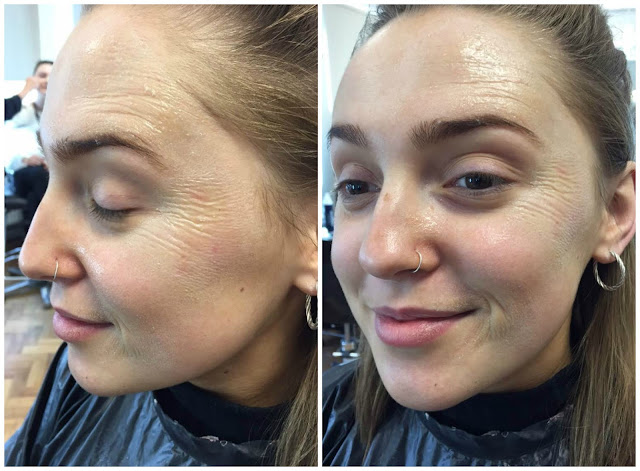Second degree burns are more serious as the damage extends to the top layer of the skin. This damage can cause skin to blister, become extremely red and sore. They can look wet!
Third degree burns are the worst kind. The burns go through every layer of skin and can result in death if they reach major organs and bones.
In our lesson with Sue today we learnt how to create an effective looking burn using gelatine. We firstly looked at the types of burns that we could create, and then watched her explain how to create them with makeup.
- Melt the gelatine in a plastic pot in the microwave for about 20 seconds. Stir until ready to use, keep it moving otherwise it gets thick very quickly!
- You must test the temperature of the gelatine before you use it on your client. When it is bearable on your own skin, it is ready to be applied to the client.
- Once it's on the skin in a thick layer, smooth out the edges so that it blends with the skin and doesn't look 'stuck on'.
- You can make blisters by dapping and pushing at the gelatine and letting it ping back to place.
- Dry the gelatine with a cool hairdryer until cool to touch - it will feel tacky!
- You can neaten the edges by dipping the cotton bud into witch hazel.
- Powder with translucent powder to make it look more fleshy.
- Use a powder brush to mix moisturiser and the red colours from your supra colour palette and dab/stipple them to create a sore look around the 'burn'.
- For the next step, I applied wound filler to the edges of the burn, blended them out, and then filled in any little holes/lines with it too. I also used fake blood to dabble onto the burn for effect.
- Gelatin (you can use the sachets from supermarkets if you can't afford a huge amount of gelatine)
- Supra colour palette - the red/burgundy colours
- Witch hazel
- Wound filler
- Fake blood
Tools:
- Microwave (to heat the gelatine)
- Plastic bowl
- Metal Pallet knife
- Makeup brushes
- Artist brushes
- Cotton buds
HEALTH AND SAFETY:
For this this special effects lesson I ensured my model was covered over in case anything spilt/splattered on her, as well as tying up her hair so it didn't track in the wound. I carried out a skin test with the products I was using before I started the process. Once I knew there wasn't a reaction on the client I could proceed the wound! As well as this, before starting I made sure that the heated gelatine wasn't too hot for the client by testing on myself first and then applying a tiny amount to the client and asking if it was alright to carry on.
Bibliography:
https://www.scripps.org/encyclopedia/graphics/images/en/1078.jpg
http://www.healthline.com/health/burns#Third-Degree5













